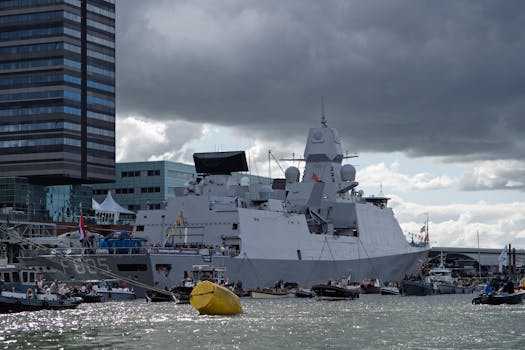
**
Introduction:
During his presidency, Donald Trump championed a hardline stance on immigration, promising a "beautiful" wall and stricter border controls. While the rhetoric captivated his base, the economic implications of his proposed immigration policies remain a subject of intense debate. This article delves into the potential real costs of Trump's immigration plan, examining the projected financial burden, the impact on the labor market, and the broader economic consequences for the United States. Keywords like Trump immigration policy, immigration economic impact, cost of border wall, illegal immigration cost, and immigration reform will be woven naturally throughout the text to maximize SEO effectiveness.
The Astronomical Price Tag: Beyond the Wall
The most visible aspect of Trump's immigration plan was the proposed border wall with Mexico. Initial estimates pegged the cost at $15 billion, but independent analyses quickly inflated this figure, suggesting a price tag closer to $70 billion – a significant burden on taxpayers. However, the financial burden extended far beyond the wall itself. The increased enforcement measures, the expansion of detention facilities, and the heightened deportation efforts all contributed to a staggering projected cost. Some economists estimate the overall cost of Trump's immigration policies, including enforcement, detention, and legal challenges, to be well over $1 trillion over a decade. This figure encompasses:
- Border Wall Construction and Maintenance: The ongoing costs associated with construction, maintenance, and repair of the wall are a considerable drain on resources.
- Increased Border Patrol and ICE Staffing: Expanding the workforce to enforce stricter border controls necessitates significant investment in salaries, training, and equipment.
- Deportation Costs: The process of apprehending, detaining, and deporting undocumented immigrants is expensive, involving legal fees, transportation, and logistical challenges.
- Legal Challenges: Numerous legal challenges to Trump’s immigration policies have incurred substantial legal costs for the government.
The Labor Market Fallout: Millions of Jobs at Risk?
Beyond the direct financial costs, Trump’s immigration policies threatened to disrupt the U.S. labor market. The projected impact on employment varies widely depending on the model used, but several studies suggest potential negative consequences:
- Agricultural Sector: The agricultural sector relies heavily on undocumented immigrant labor. Stricter immigration enforcement and reduced access to this workforce could lead to labor shortages, increased production costs, and higher food prices. This impacts not only farmers, but also the entire food supply chain.
- Construction and Service Industries: Many construction and service-sector jobs are filled by undocumented immigrants. Reduced labor supply could lead to labor shortages, project delays, and higher costs for consumers.
- Economic Ripple Effects: The negative impacts on specific sectors could have broader economic ripple effects, potentially slowing overall economic growth.
Furthermore, the uncertainty created by the shifting immigration policies discouraged investment and hampered economic planning, adding another layer of complexity to the economic fallout.
The Human Cost: Separated Families and Deportations
The human cost of Trump's immigration policies is immeasurable. The separation of families at the border, the prolonged detention of asylum seekers, and the mass deportations resulted in immense human suffering. The psychological trauma experienced by families separated at the border has long-lasting consequences, highlighting the significant social costs of these policies.
Long-Term Economic Consequences:
The long-term economic consequences of Trump’s immigration policies are still unfolding. Reduced immigration could slow economic growth, increase labor costs, and reduce innovation. The potential for a shrinking workforce in the face of an aging population further exacerbates these concerns. This includes:
- Reduced Economic Growth: Reduced immigration could limit the size of the workforce and hamper economic growth.
- Increased Labor Costs: Shortages of workers in certain sectors could drive up wages, increasing costs for businesses and consumers.
- Decreased Innovation: Immigrants are often responsible for a disproportionate share of innovation and entrepreneurship in the U.S. Restricting immigration could stifle innovation and limit economic dynamism.
The Debate Continues: Assessing the Legacy
The true cost of Trump's "beautiful" immigration plan remains a subject of ongoing debate. While proponents argue that stricter enforcement is necessary for national security, critics highlight the significant economic and humanitarian costs. The $1 trillion price tag represents a substantial burden on taxpayers, while the potential for millions of lost jobs underscores the significant economic risks associated with these policies. The long-term economic consequences will continue to be felt for years to come. Further research and analysis are crucial to fully understanding the multifaceted impact of these policies on the American economy and society. The impact of these policies on undocumented immigrants, DACA recipients, and the broader immigrant community continues to be a subject of much discussion and analysis.
Conclusion:
Trump's immigration policies presented a complex equation, balancing security concerns with economic and humanitarian considerations. The potential costs – financial, labor-related, and human – far outweigh the perceived benefits. Understanding these multifaceted costs is vital for informed policymaking and for shaping a more rational and humane approach to immigration in the future. The legacy of these policies will continue to be debated and analyzed for years to come, underscoring the need for comprehensive and data-driven solutions to immigration challenges.



















